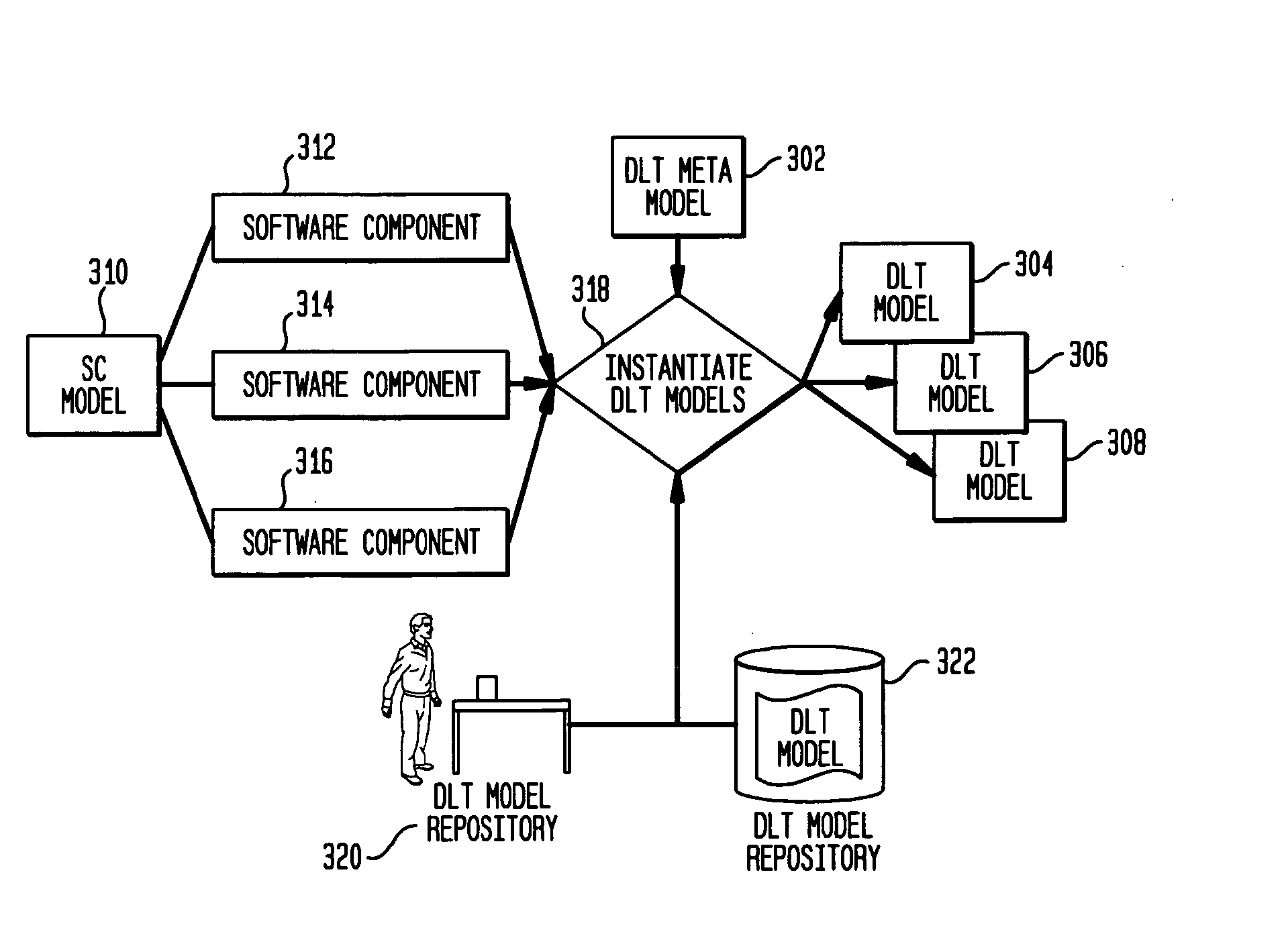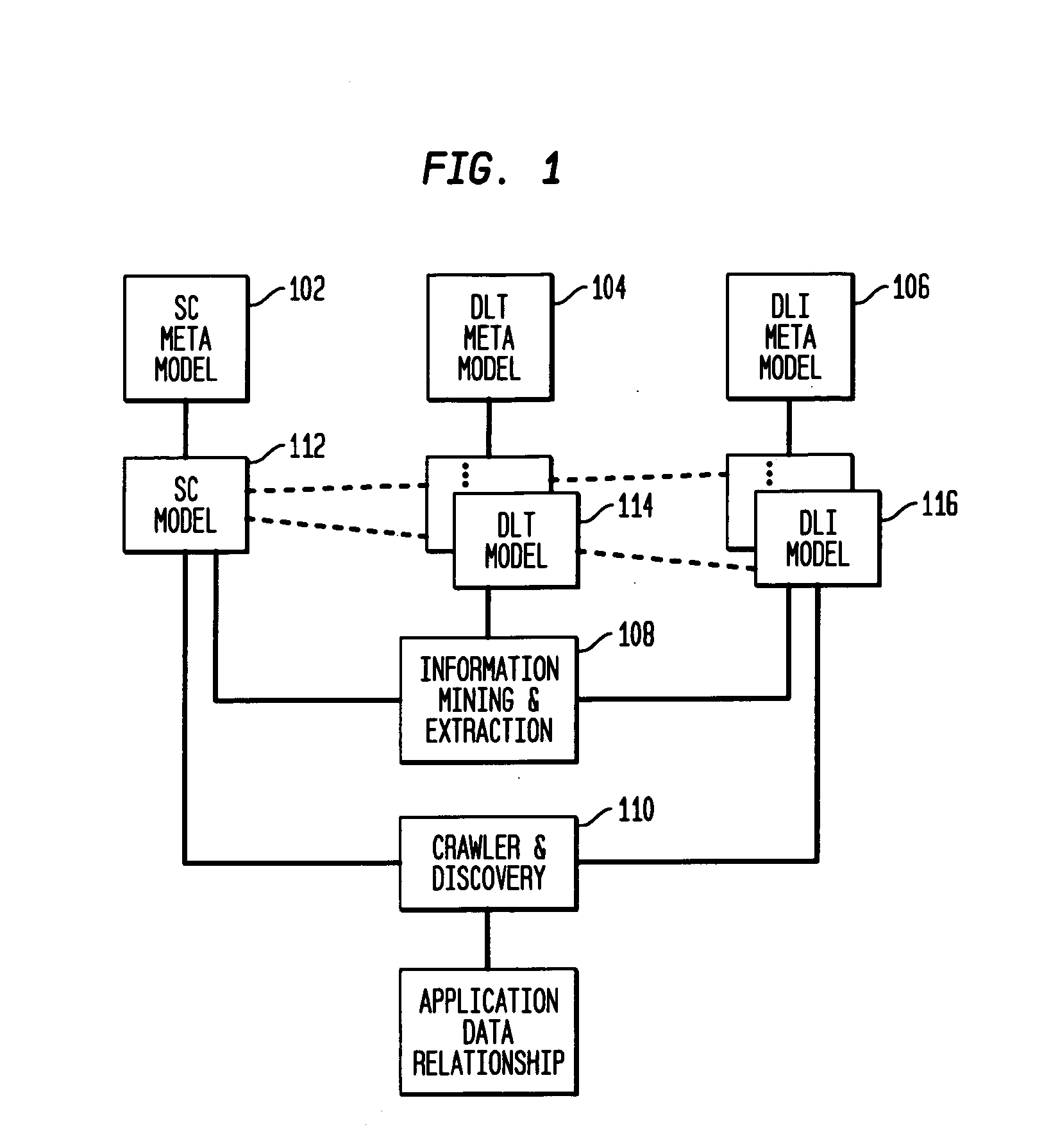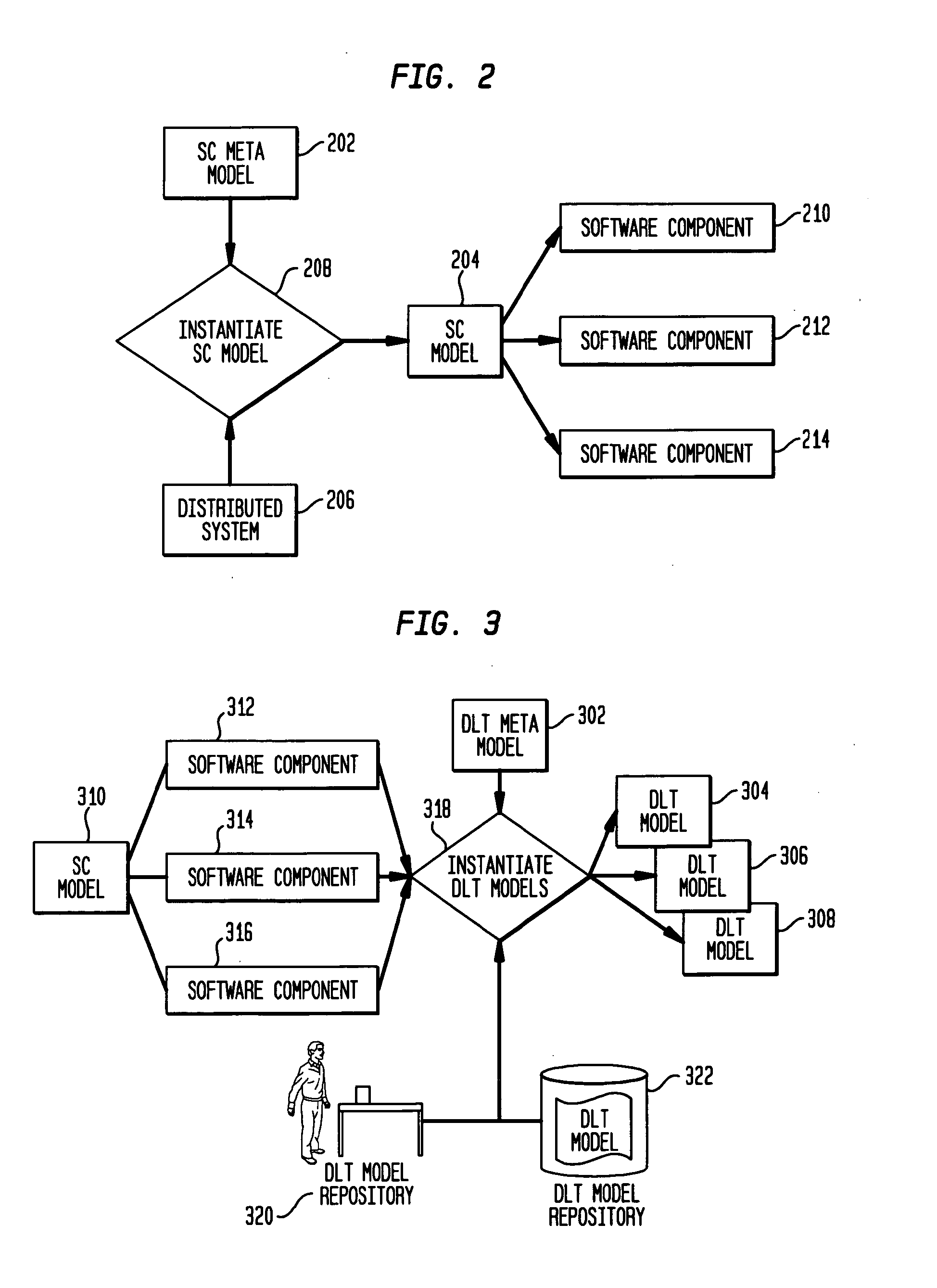Data locations template based application-data association and its use for policy based management
a data location and application-data technology, applied in the field of software modeling and distributed systems, can solve the problems of manual discovery of application-data associations, difficult and error-prone tasks, and the inability to eliminate the possibility of overlooking some application-data relationships
- Summary
- Abstract
- Description
- Claims
- Application Information
AI Technical Summary
Benefits of technology
Problems solved by technology
Method used
Image
Examples
Embodiment Construction
[0020]FIG. 1 illustrates an overview of system architecture in one embodiment of the present disclosure. In an exemplary embodiment, three meta-models provide descriptions of distributed system infrastructure and of data consumption and data transformation in software components. In general, a meta-model is a precise definition of the constructs and rules needed for creating semantic models of particular entities. Another way to think about meta-models is as collections of “concepts” (e.g., things, terms, etc.) that make up a vocabulary with which one can talk about a certain domain. It is a similar concept to a “schema” as used in databases or XML, or to the definition of a class in object-oriented languages. One meta-model in an exemplary embodiment of the present disclosure describes models of distributed system infrastructure, and two meta-models describe models of software, for example, application or middleware components.
[0021]In one embodiment, the meta-models may include a ...
PUM
 Login to View More
Login to View More Abstract
Description
Claims
Application Information
 Login to View More
Login to View More - R&D
- Intellectual Property
- Life Sciences
- Materials
- Tech Scout
- Unparalleled Data Quality
- Higher Quality Content
- 60% Fewer Hallucinations
Browse by: Latest US Patents, China's latest patents, Technical Efficacy Thesaurus, Application Domain, Technology Topic, Popular Technical Reports.
© 2025 PatSnap. All rights reserved.Legal|Privacy policy|Modern Slavery Act Transparency Statement|Sitemap|About US| Contact US: help@patsnap.com



